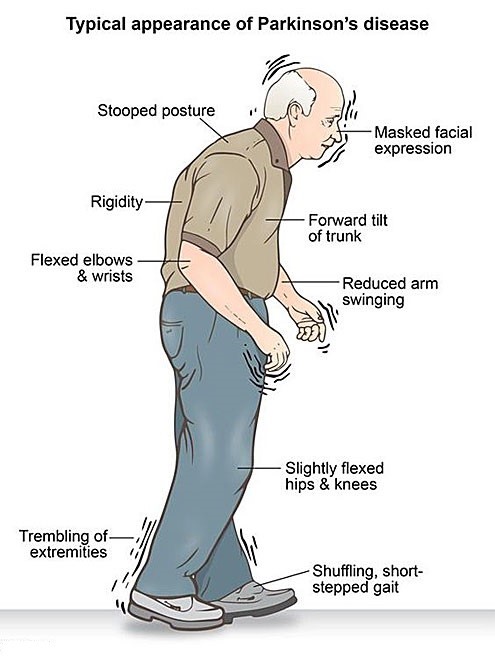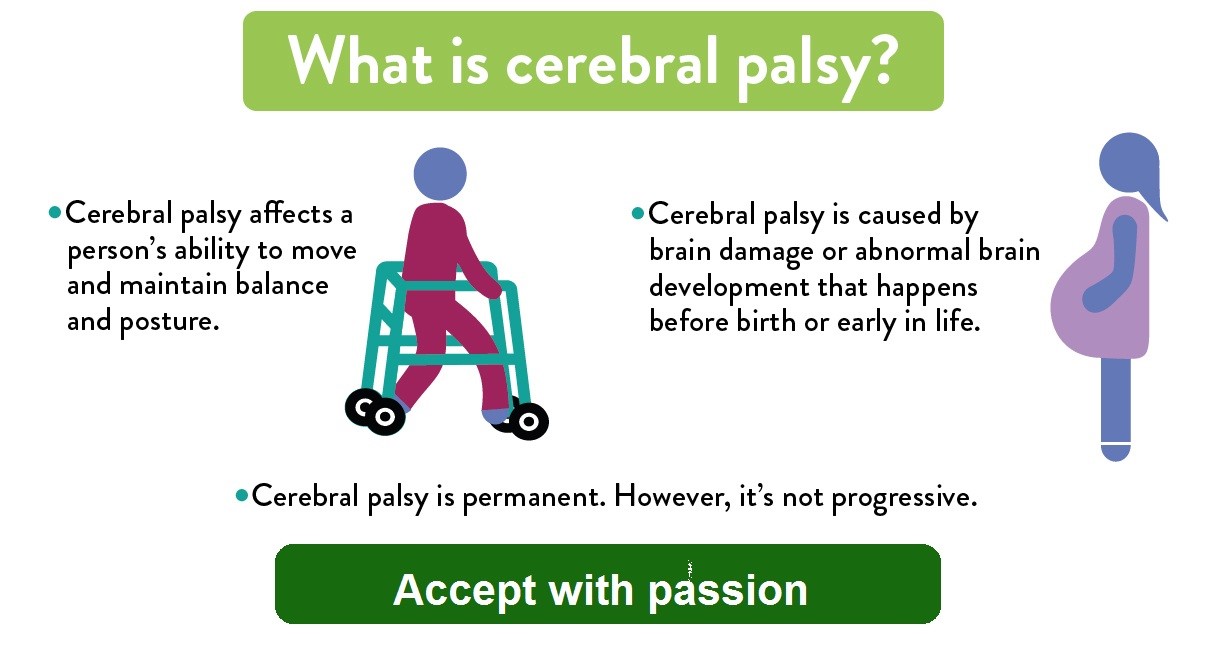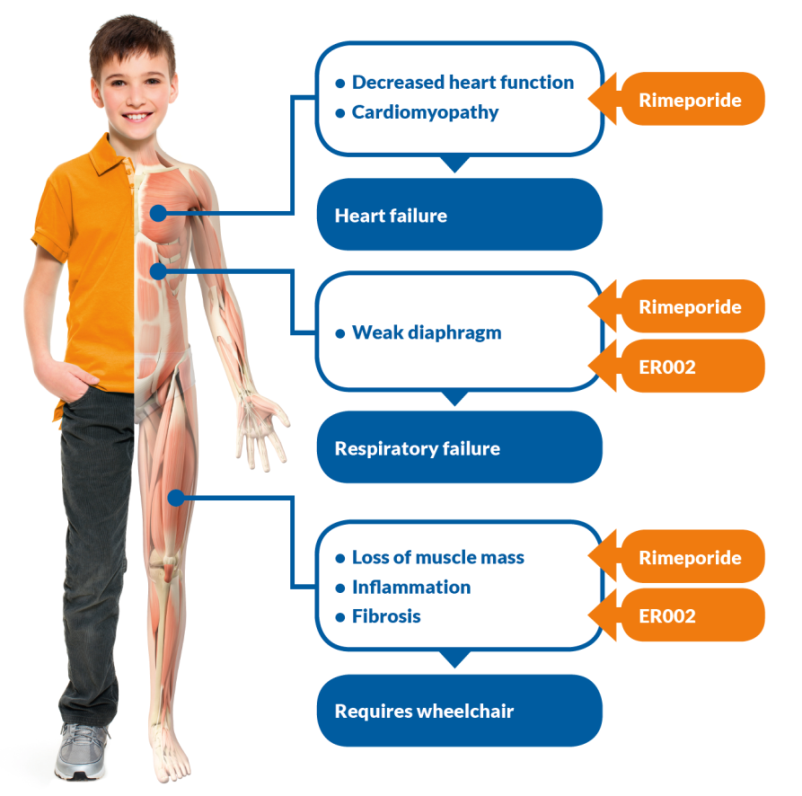
Parkinson's disease is a progressive neurodegenerative disorder that affects the nervous system and causes movement problems. The early signs of Parkinson's include tremors, stiffness, and difficulty with balance and coordination.
Early signs of Parkinson's are just tremors and shaking of hands or feet. Parkinson's symptoms include it typical tremors, and Parkinson's dementia, Parkinsonism gait. Difficulty in speech may be early symptoms of Parkinson’s disease. Parkinson's symptoms like cognitive changes, depression, and sleep disturbances may be seen as the disease progresses. In some cases, patients may experience Parkinson's and dizziness, which can be a result of blood pressure fluctuations or the medication used to treat the disease. Signs of Parkinson's disease may be short steps and jerky rigid walk. Parkinson's disease dementia is common debilitating factor in this condition. Parkinson's disease gait is also typical of the disease.
Parkinson’s Disease Cause: Causes of each type of PD has its own causes - cause of idiopathic Parkinson’s disease is not known. Vascular Parkinsonism also known as arteriosclerotic Parkinsonism is due to restricted blood supply to brain generally in diabetes mellitus. Drug Induced Parkinsonism – around 7% of people develop this type of disease. Most recover after stopping the drug.
Diagnosis Parkinson's Disease: Parkinson's disease is typically diagnosed through a combination of medical history, physical examination, and neurological evaluation. The doctor may ask questions about the patient's symptoms, medical history, and family history of Parkinson's or other neurological disorders. A physical exam may include tests of reflexes, muscle strength, coordination, and balance. The neurological evaluation may involve assessments of the patient's movement, speech, and cognitive abilities. In some cases, imaging tests such as MRI or CT scans may be used to rule out other conditions. A definitive diagnosis of Parkinson's disease can only be made by a neurologist or other healthcare professional with expertise in movement disorders.

Parkinson's disease treatment aims to manage symptoms and slow the progression of the disease. Parkinson's disease medication is the primary treatment for motor symptoms, such as tremors, rigidity, and bradykinesia. Levodopa, dopamine agonists, and MAO-B inhibitors are commonly prescribed medications for Parkinson's treatment. Additionally, research has shown that targeting specific proteins and Parkinson's medication can help improve symptoms and potentially slow disease progression. Parkinson's physical therapy and Parkinson's physiotherapy can be used to help improve mobility, balance, and flexibility. Parkinson's speech therapy can help with communication difficulties that can arise from the disease. In some cases, DBS surgery for Parkinson's (deep brain stimulation) may be recommended to help manage symptoms when medication and other therapies are not effective. The most appropriate treatment plan for PD treatment will vary depending on the individual patient and the progression of the disease. Even though there is no Parkinson's disease cure, symptoms can be controlled to some extent by the above management.
Parkinsonism prognosis is good if disease is diagnosed early and proper treatment given. Parkinson's disease life expectancy is same as other population if managed well. There is no Parkinson's disease cure but provided properly managed patients can live as others.
Acupuncture relieves Parkinson’s disease symptoms. Acupuncture has significant positive effects on the relief of PD symptoms. Researchers document the ability of acupuncture to reduce pain, anxiety, depression, hot flashes and abnormal sweating in a clinical case history. The patient responded with significant positive patient outcomes after a 2 week regime of acupuncture treatments given at a rate of five days per week. Acupuncture successfully reduces pain, autonomic nervous system dysfunction, and mental illness in Parkinson’s disease patients. Acupuncture can be considered a combination treatment with conventional treatment for patients with PD. We at Dr. Pardeshi Acupuncture, treat Parkinson’s Disease regularly.
“Conclusions: We performed a systematic review and meta-analysis to evaluate the use of acupuncture for relief of PD symptoms and found that acupuncture has significant positive effects. Acupuncture can be considered as a combination treatment with conventional treatment for patients with PD.”
“Acupuncture is widely accepted as an alternative therapy for Parkinson’s disease (PD) in East Asia. We hope that general PD researchers would accept the acupuncture therapy to a greater extent in future.”
“Clinical studies in China and Korea, in particular, have shown a positive benefit of acupuncture in treating Parkinson's disease, especially in reducing the doses of dopaminergic medications and the associated side effects.”
"Acupuncture can be a safe way to decrease gait disturbances,"
You can use search engines like Google to find Parkinson's therapy centers in your local area by typing in "Parkinson's therapy near me" or "Parkinson's disease treatment center near me" in the search bar. You can also consult with your primary care physician or neurologist, who may be able to recommend Parkinson's therapy centers or specialists in your area. Additionally, Parkinson's disease organizations can also provide resources and referrals to Parkinson's disease treatment centers and support groups in your area.
Stress, Emotional disturbances, and certain medications can worsen Parkinson's Disease.
Parkinson's disease is a neurodegenerative disorder that primarily affects movement. It occurs when the brain cells responsible for producing dopamine, a chemical messenger that helps control movement, start to die off. This leads to a range of motor symptoms, including tremors, rigidity, bradykinesia (slowness of movement), and postural instability. In addition to motor symptoms, Parkinson's disease can also cause non-motor symptoms such as cognitive impairment, mood disorders, sleep disorders, and autonomic dysfunction.
Exercise, Socializing, a Healthy diet, Eating a variety of food groups, Staying hydrated, Eating fiber-rich foods, Hobbies, Yoga and meditation, and Wellness activities such as yoga and meditation are other ways people with Parkinson’s disease can practice self-care.
While Ayurveda offers various treatments for a range of health conditions, there is limited scientific evidence to support the use of Ayurvedic treatments for Parkinson's disease.
However, some Ayurvedic practitioners may recommend certain herbs and supplements to help manage symptoms of Parkinson's disease. For example, Ashwagandha (Withania somnifera) is an herb that has been traditionally used in Ayurveda for its anti-inflammatory and antioxidant properties and may help with tremors and other motor symptoms of Parkinson's disease. Other herbs such as Mucuna pruriens and Bacopa monnieri may also be recommended.
Parkinson's disease is a chronic and progressive condition, which means that there is currently no known cure for it. However, there are various treatments available that can help.
 Cerebral palsy (CP) is a set of conditions that hinder an individual's ability to move and maintain balance and posture, making it the most common motor disability during childhood. The term "cerebral" refers to the brain, while "palsy" denotes weakness or issues in utilizing muscles. Cerebral palsy occurs due to abnormal brain development or damage to the development, which affects a person's ability to control their muscles.
Cerebral palsy (CP) is a set of conditions that hinder an individual's ability to move and maintain balance and posture, making it the most common motor disability during childhood. The term "cerebral" refers to the brain, while "palsy" denotes weakness or issues in utilizing muscles. Cerebral palsy occurs due to abnormal brain development or damage to the development, which affects a person's ability to control their muscles.
Cerebral palsy in infants exhibit involuntary moments. Cerebral palsy baby may be lying in awkward position and crawl in unusual way. Cerebral palsy in children may favour one side and have limited range of movements. CP child can have hearing and eyesight problems. Signs of cerebral palsy in babies may be recognised in form of problems in bladder or bowel movements. Signs and symptoms of cerebral palsy are not difficult to recognise. Seizers may be one of the signs of cerebral palsy in infants. Signs of cerebral palsy in babies may be recognised in form of problems in bladder or bowel movements. CP does not deteriorate over time, although specific symptoms can change throughout an individual's life. Movement and posture problems are common to all individuals with CP, with many also experiencing related conditions such as seizures, intellectual disability, vision, speech or hearing issues, joint problems, or changes in the spine (e.g., scoliosis).
The management of cerebral palsy patients involve various treatment options, such as cerebral palsy surgery, or cerebral palsy therapy. The treatment of cerebral palsy aims to improve the patient's ability to function in daily life and achieve the highest level of independence possible by cerebral therapy. Delayed milestone treatment and developmental delay treatment are also crucial aspects of managing cerebral palsy patients.
One of the most common symptoms of cerebral palsy is spasticity, which refers to involuntary muscle contractions that cause stiffness or tightness in the muscles. Spasticity treatment is an essential component of cerebral palsy management and can involve medication, therapy, or surgery, depending on the severity of the condition. Movement disorder treatment is another critical aspect of cerebral palsy management. Individuals with cerebral palsy often have difficulty with movement and posture, which can lead to a range of complications. Effective treatment can improve the patient's quality of life and prevent secondary health problems.Cerebral palsy in adults: Cerebral palsy is not progressive, therefore will not worsen but there are additional challenges. In congenital cerebral palsy, life expectancy can be normal but there is premature aging. Level of intelligence cerebral palsy is generally normal but can be affected in certain cases of brain damage. The management of cerebral palsy patients involves a multidisciplinary approach that includes, neurological disorder treatment along with the rest of management as given. With appropriate treatment, individuals with cerebral palsy can achieve their full potential and lead fulfilling lives.
Cerebral palsy physiotherapy can involve a range of techniques, including exercises to improve strength, flexibility, and balance, as well as gait training to help the patient walk more effectively. Other techniques, such as stretching, massage, and electrical stimulation, can also be used to manage spasticity and improve muscle function.
Acupuncture plus rehabilitation training improved gross motor function, reduced muscle spasms, and enhanced daily life activities in children with cerebral palsy. One study concluded that acupuncture may be extremely beneficial to kids with cerebral palsy, and can help with associated disorders that often accompany the disorder, such as difficulties with speech and hearing. It can also help with:
We at Dr. Pardeshi Acupuncture Center are routinely treating CP children and the results are very encouraging.
“Chinese scalp acupuncture in these 33 cases appears to be an effective treatment for patients with CP and should be considered as an adjunctive therapy for more CP patients. Chinese scalp acupuncture relieved many of these patients' symptoms, increased their quality of life, and reversed many physical disabilities. Some of the patients returned to a normal life.”
“There is a growing amount of clinical evidence that scalp acupuncture can improve or remove symptoms in patients with cerebral palsy.”
“Although these results should be interpreted cautiously, acupuncture can be used to supplement the conventional therapy for glaucoma.”
Acupuncture therapy is the best treatment along with physiotherapy which involves exercises to help maintain and hopefully improve movement. It is one of the most important combinations for treatments for cerebral palsy.
However, the doctor may advise acupuncture and other therapies that are beneficial for the child. Physical therapy involves muscle training and exercise to help the child develop balance, coordination, flexibility, and strength of muscles. There is no cure for cerebral palsy.
Acupuncture can significantly improve the grade of spasticity, help patients to restore muscle tension and motor function, improve the quality of life, and reduce the disability rate
Scalp acupuncture is an important means of rehabilitation for cerebral palsy in traditional Chinese medicine. It is a contemporary acupuncture technique integrating traditional Chinese needling methods with Western medical knowledge of representative areas of the cerebral cortex. A point on motor areas is applied for the treatment.
Multiple Sclerosis (MS) is a chronic autoimmune disease that affects the central nervous system, and it can have various symptoms in both males and females.
When diagnosing multiple sclerosis, a neurologist will typically conduct a physical exam to assess a person's neurological function. They will look for symptoms of multiple sclerosis-like abnormalities, changes, or weakness in various areas, including vision, eye movements, hand or leg strength, balance and coordination, speech, and reflexes. These symptoms can indicate whether a person's nerves are damaged in a way that might suggest MS. In addition to a physical exam, the doctor may also order additional tests, such as an MRI or a spinal tap, to help confirm a diagnosis of multiple sclerosis. Early detection and treatment can help manage the condition and prevent further damage to the nervous system. Recognizing the signs of MS can be difficult, as they can vary and overlap with other conditions. Accurate multiple sclerosis diagnoses typically involve a combination of physical exams, medical history review, and various tests, including MRI and spinal tap.
The exact cause of multiple sclerosis is unknown, but it is believed to be an autoimmune disease that occurs when the immune system attacks the myelin sheath that surrounds and protects nerve fibers in the central nervous system. While there is no known multiple sclerosis cause, early diagnosis, and treatment can help manage symptoms and slow disease progression.

Disease-modifying therapies, including multiple sclerosis immunosuppressive drugs and multiple sclerosis chemotherapy, can help slow disease progression and reduce inflammation in the central nervous system. These treatments work by targeting the immune system, which can help reduce the severity of symptoms and prevent relapses. Disease-modifying therapy, also known as DMT, can significantly improve outcomes for people living with MS. While there is no known cure for MS, disease-modifying therapy can help manage the condition and improve the overall quality of life.
Additionally, MS physiotherapy can be an effective treatment to improve mobility and reduce muscle spasms. Other multiple scleroses therapies such as occupational therapy, speech therapy, and cognitive rehabilitation can also help manage symptoms and improve quality of life. While there is no known cure for MS, early diagnosis and treatment with multiple sclerosis drugs and therapies can significantly improve outcomes for people living with the condition.
There is no multiple sclerosis cure. Treatment typically focuses on speeding recovery from attacks. Even though there is no MS cure, medicines, and other treatments can help control the condition and ease some of the symptoms. Multiple sclerosis prognosis generally is fair provided good treatment and multiple sclerosis nursing care is available.
Although conventional treatments cannot provide a cure for MS, acupuncture has emerged as a significant complementary and alternative therapy for this condition. A recent case report suggests that scalp acupuncture may be a more efficient method for producing rapid and effective improvements in patients with MS when compared to other acupuncture modalities, such as ear, body, and hand acupuncture. Furthermore, Chinese scalp acupuncture is readily available, relatively inexpensive, has a lower risk profile, often leads to quicker responses, and generally causes fewer side effects than some other treatments
“Acupuncture may provide relief for some MS-related symptoms, including
pain, spasticity, and numbness and tingling, bladder problems, and
depression.”
“The study finds that acupuncture relieves the symptoms of multiple sclerosis, increases the patient’s quality of life, slows the progression of physical disability and reduces the frequency of relapses.”
“Acupuncture might be a reasonable treatment option for some people with MS. In small, preliminary studies, acupuncture has been shown to have potential benefits for some MS-related symptoms. It is generally well tolerated, but there is a slight chance of serious side effects in susceptible people.”
“Our study protocol provides evidence that acupuncture treatment can be an attractive option for patients with multiple sclerosis, with gait impairment.”
Currently, there is no cure for multiple sclerosis (MS), but various treatments can help manage the disease's symptoms and slow its progression. Treatment options for MS depend on the stage of the disease, the severity and specific symptoms, and the patient's overall health.
Some treatments aim to reduce the frequency and severity of relapses, which are episodes of new or worsening symptoms. These treatments typically involve the use of steroids, such as oral or intravenous (IV) corticosteroids, to reduce inflammation in the central nervous system.
The treatment of multiple sclerosis (MS) varies depending on the type and severity of the disease, as well as individual patient factors. There is no cure for MS, but various medications can help manage symptoms, slow the progression of the disease, and prevent relapses. Some common medications used to treat MS include Interferon beta, Glatiramer acetate, Fingolimod, and others.
It is important to note that these medications can have side effects and may not be appropriate for everyone with MS. Patients should discuss their options with their healthcare provider to determine the best treatment plan for their individual needs.
The average life expectancy for people with MS is around 5 to 10 years lower than average" is not entirely accurate. While MS can reduce life expectancy in some cases, the overall impact on life expectancy is more variable and depends on various factors, such as the type and severity of the disease, age of onset, and overall health of the individual. Some studies suggest that the life expectancy of people with MS is similar to that of the general population, while others suggest a modest reduction in life expectancy. However, with the advancements in treatments and care for MS, many people with the condition can have a good quality of life and can manage the disease effectively. Individuals with MS need to work closely with their healthcare provider to develop a personalized treatment plan and to maintain a healthy lifestyle.
While there is no cure for MS, various treatments can help manage the symptoms of the disease and slow its progression. Medications such as corticosteroids, immunosuppressants, and disease-modifying therapies can help reduce inflammation, prevent relapses, and protect nerve cells. Other treatments, such as physical therapy, occupational therapy, and speech therapy, can help improve mobility, strength, and coordination, as well as address communication and cognitive issues. Additionally, lifestyle modifications, such as regular exercise, a healthy diet, and stress management, can help improve overall health and well-being.
Muscular Dystrophy is group of diseases that make muscles weaker and flaccid over time. Duchenne muscular dystrophy (DMD) disease is most common type of muscular dystrophy. Duchenne muscular dystrophy causes: It is caused by defect in control of how body keeps muscle health. Here the gene that makes protein dystrophin is broken. For Duchenne muscular dystrophy inheritance is always the source. It comes as congenital muscular dystrophy. That means Duchenne muscular dystrophy genetics responsible for causing the disease. Muscular dystrophy boys are almost always the victims of disease.
Duchenne symptoms and signs are indicative of DMD. Diagnosis can be made by testing for creatine, and CK level muscle biopsy and genetic structure examination.


“Dr Pardeshi advised us for acupuncture treatment for muscular dystrophy for our son and after giving treatment for 3 months, we really did get amazing results and even proofed by lab results”
While there is no DMD cure, several treatments are available to help manage symptoms and improve quality of life. The successful treatment of muscular dystrophy often involves a combination of physical therapy, medication, and supportive care. In recent years, there have been promising developments in Duchenne muscular dystrophy new treatment, including gene therapies and exon-skipping drugs. These innovative approaches aim to address the underlying genetic mutations responsible for DMD and may offer a significant improvement in disease management. Furthermore, Becker muscular dystrophy treatment help improve muscle strength and mobility. However, it is worth noting that the latest Duchenne muscular dystrophy treatment cost can be very high. Nonetheless, ongoing research and innovation in the field of muscular dystrophy treatment offer hope for improved outcomes and quality of life for those living with these conditions. It is important to note that treatment for DMD is not just a financial burden, but also an emotional one, with many families affected by the condition facing significant challenges. Muscular dystrophy rehabilitation can help individuals with the condition improve their strength, mobility, and overall quality of life.
Acupuncture improves patient outcomes for patients with Duchenne muscular dystrophy (DMD). In addition, significant reductions in inflammatory related muscle enzyme secretions are achieved. Acupuncture may help to fight effects of Duchenne disease as confirmed by many scientific studies.DMD treatment has now better and more roles in its management. Duchenne muscular dystrophy clinic may prescribe steroids and Etelpirsen. Duchenne muscular dystrophy exercises are essential part of life of DMD. Duchenne muscular dystrophy stretching has to be within limits to avoid injuries. Sometimes surgery may be needed to release contractures. Duchenne muscular dystrophy picture has improved over years. Duchenne muscular dystrophy life expectancy was no more than teen age before, but now they can live till 30 or sometimes 40 or 50. Duchenne muscular dystrophy treatment centres are now able to provide better support to ease symptoms and protect muscles. Duchenne muscular dystrophy association can make management approach easier. More and latest information can be availed from sources like muscular dystrophy news, Duchenne muscular dystrophy articles and Duchenne muscular dystrophy wiki.
"We hope to introduce acupuncture as a new strategy for preventing skeletal muscle atrophy in the future.”